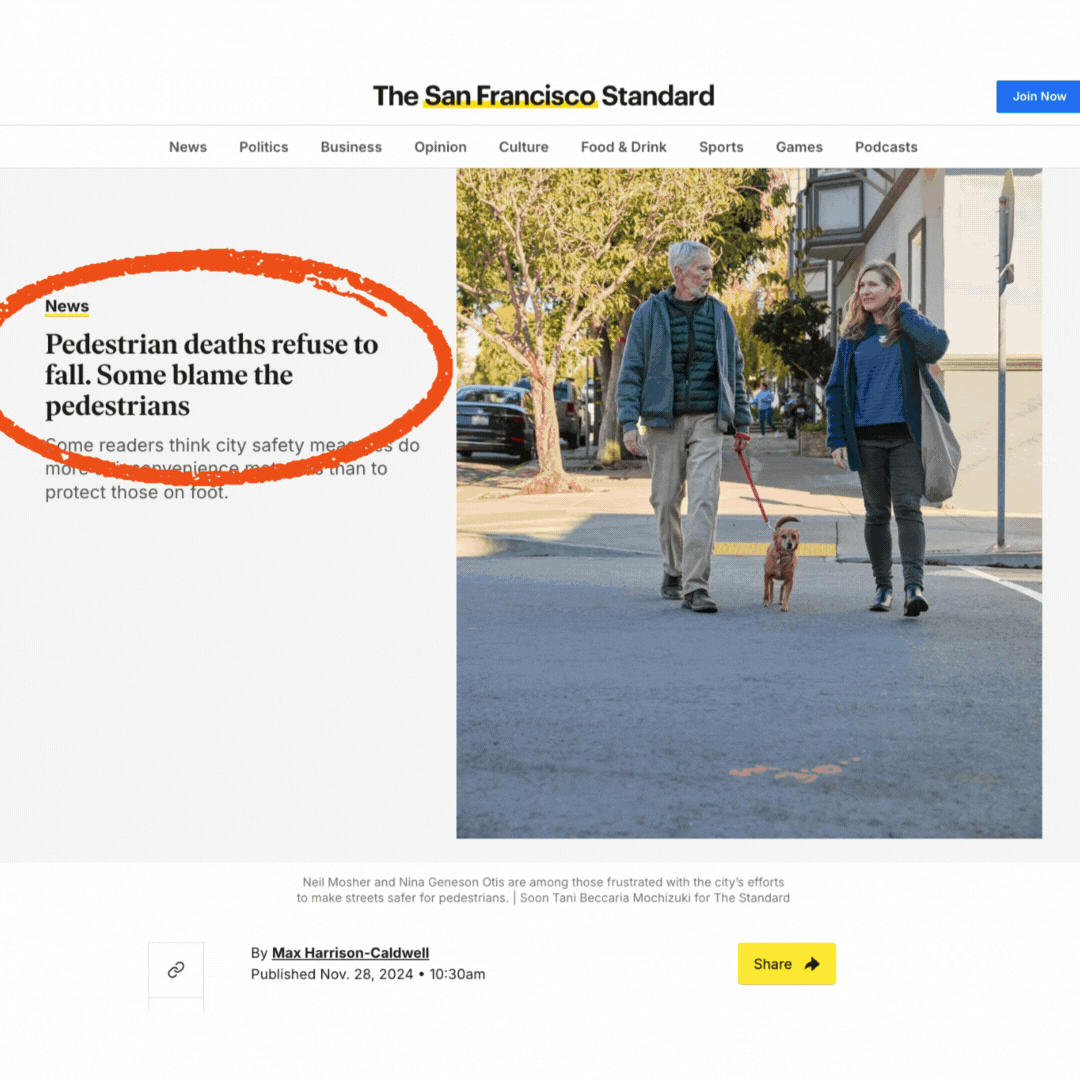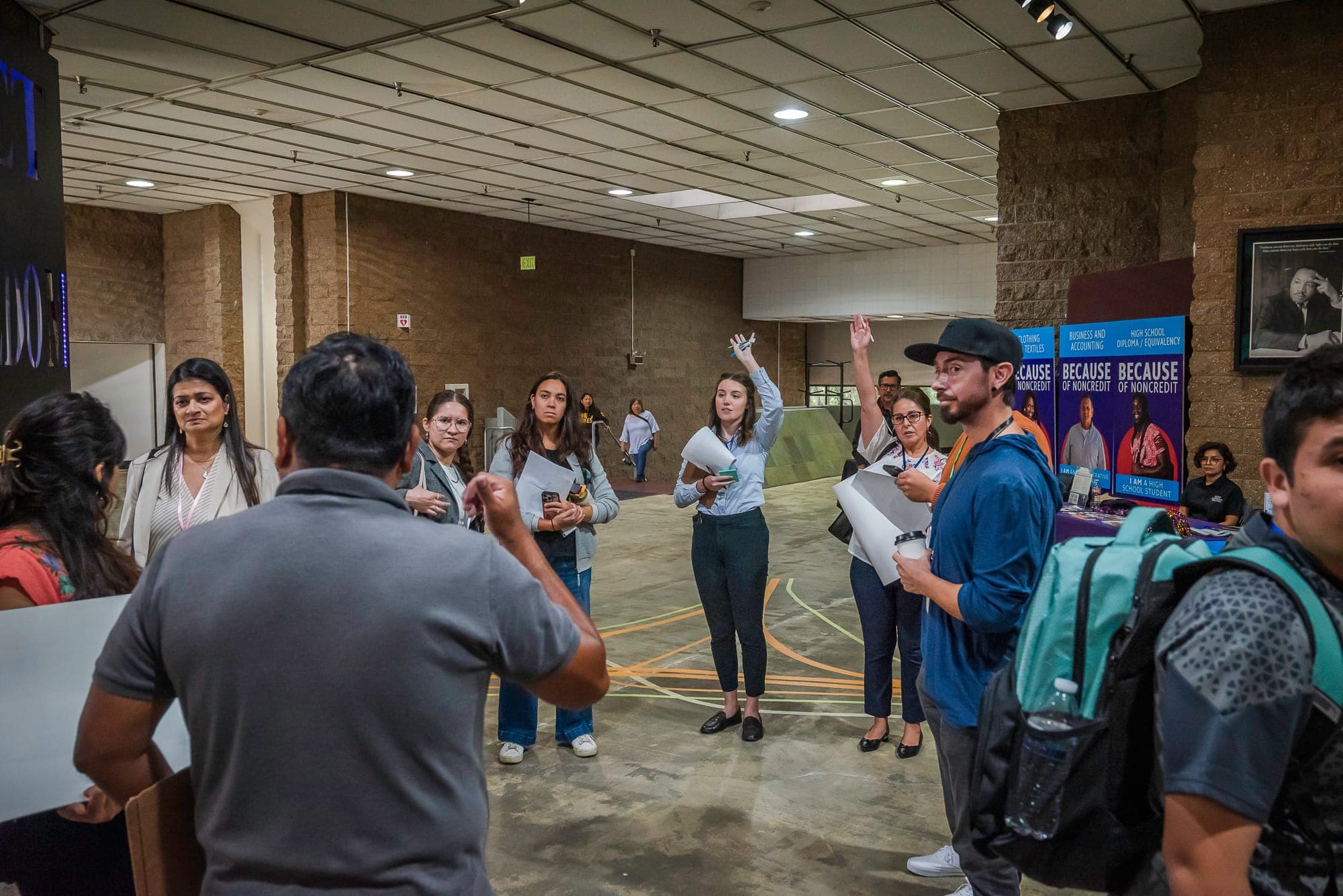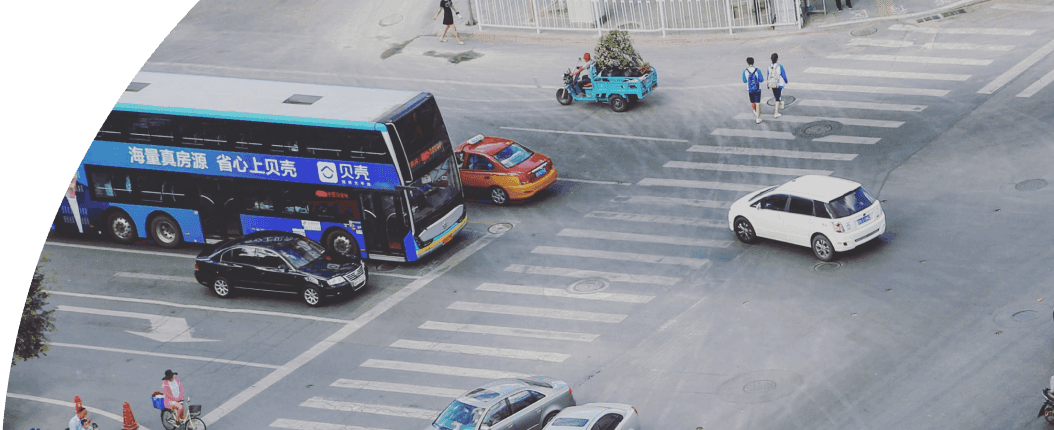
News
By Heidi Simon, October 30, 2025
At Smart Growth America, we talk a lot about what’s needed to improve transportation so folks can easily and safely get around, no matter how they choose to travel. With this outcome in mind, one of our priorities is to change the way people, including elected officials and the media, talk about transportation safety.
Far too often, we come across press coverage that victim-blames and perpetuates the notion that the car is king of our transportation network. In our fight for safer, more accessible streets, we can’t forget that what’s in print, on our TVs, and shared on social media informs decision-making and shapes perceptions.
Here are a few things that we must overcome alongside broken sidewalks, paint-only bike lanes, and infrequent crosswalks.
Time-tested solutions are not given the positive coverage they are due
We know how to improve safety and accessibility—and we have the receipts to back it up. Journal articles, scientific research, and real-world testing have shown that to protect people walking and biking, we need to improve visibility, slow speeding cars, and provide dedicated space for all modes. Yet, far too often, we see headlines that give credence to the idea that a bike lane is somehow unsafe, a painted crosswalk is distracting, or street design changes will increase congestion. Those loudest voices about the inconvenience of drivers should spend a little less time concerned for perceived inconveniences and a little more time worrying about whether roads are safe enough for their neighbors, children, and grandparents.
The media’s desire to cover charged news makes it seem as though the bikelash is more widespread than it is, and it perpetuates a narrative that makes advocating and funding new street design harder than it should be. We need more regular mainstream coverage demonstrating the many benefits that can come from making improvements for people walking and biking and, yes, even those behind the wheel who would rather not see “ugly” infrastructure but are safer when it's in place.
Transportation violence is too often treated as a random tragedy and not a systemic problem
That pedestrians and bicyclists are struck and killed by cars at a disproportionate rate is a systemic problem, as we argue regularly in Dangerous by Design. Yet, coverage of crashes treats them as one-off events even though they occur on a regular, almost daily, basis. Occasionally, reporters mention if multiple crashes have taken place at the same location, but even that fails to adequately point to what’s at the root of what’s causing them. Responsible coverage is reserved for deep-dive reporting produced as features, which is useful in highlighting the issue but does little to drive home the daily nature of people being killed. Reporting crashes as singular events makes it far too easy to assign blame to individual actors and even the victim of the crash itself. If every crash exists in a vacuum, only those in the immediate event can be at fault.
It’s not just the scale and scope of the reporting that’s troublesome. Even the word choices made by reporters can influence the perception of what (or who) was the cause of a crash. Despite the well-documented derogatory origin of the word “jaywalker,” it’s a term that reporters too often resort to when describing a fatal crash—and it's even an approved term by the Associated Press. While some reporters are using the word with more nuance, the word carries a negative perception that is geared toward the victim, again ignoring the real causes of the crash, such as low lighting, crosswalks being too far apart, or even no pedestrian infrastructure at all. We would be happy for the term jaywalker to be stricken from common use, as it does community members a disservice, by shifting blame to the individual and away from systemic-level solutions (policy change, funding reprioritization, design guidance updates) to achieve safer streets.

Too often, the good coverage is taking place in an echo chamber
There are some media outlets that consistently do a great job covering the danger on our roads, and some specific stories that cover the issues in the right way. To drive action, we need to see a wholesale change. We love our friends at the transportation publications doing hard work to ring the alarm bell on road safety around the U.S. But if we truly want to chip away at some of the misconceptions and grow the call for true change to create safer streets, we need to break out of that echo chamber and beyond one-off stories. We need a wholesale change to how people talk about roadway fatalities, including in local media and from our elected officials. Transportation violence is a persistent problem impacting communities and people in all corners of the country, and needs to be covered as such. The fact that pedestrian fatalities have increased 75 percent since 2010 should be front-page headline news every day until the issue is resolved.
What can you do?
Transportation advocates need to put their efforts behind changing the design of their streets, but also educating the media and their communities about how to be in the fight with them. Even small steps, such as broadening the list of who gets interviewed about a proposed street change, taking care with word choice in crash coverage, or making sure that community context is considered, can help reshape the narrative around traffic violence. Advocates should make sure that local media is engaged on the issue more than just when a crash takes place—invite them to walk audits, tour them around a completed bike lane, have them roll up their sleeves at a quick-build demonstration.
It’s not enough to cover crashes and pushback; it’s time journalists become part of the solution to make sure there are fewer crashes to cover.
Here are five things we would like to see from journalists (and that advocates should call out in their local media)
1. Context is key: To tell the full story of a crash, we need to understand the surrounding environment and broader story of what happened not only at the scene but leading up to it.
2. No one wins playing the blame game: As we discussed above, it’s a slippery slope to victim-blaming, and focusing on individual actors ignores the policy and design changes we need for real improvements.
3. Not everything needs to be both-sided: We know what works and don’t need to debate whether a time-tested solution like a bike lane actually improves safety.
4. Language matters: Reporters have a responsibility to tell the story in a way that respects the victims and creates urgency around the issue.
5. Transportation touches everything: Crashes are just one piece of roadway safety, and we need coverage of the progress being made and the intersectionality of street issues.
Related News

© 2025 Smart Growth America. All rights reserved
Site By3Lane Marketing














